By Vanessa Grossl, CSG policy analysis
The COVID-19 pandemic continues to severely impact state economies, businesses and the workforce with over 26 million now unemployed nationwide. Here is how it has impacted different sectors of the workforce in recent days:
Health Care
- States are continuing to implement various initiatives to strengthen their health care capacity, such as California’s Executive Order creating the California Health Corps that considers dentists essential health care providers and allows hygienists and dental assistants to register in the event that they are needed if/when demand for medical services surge.
- Governors of Michigan, New York, New Jersey, Nevada, Massachusetts and a few other states have issued executive orders to relax the rules and issue temporary medical licenses to internationally trained physicians who have practiced in other countries and have a certain number of years of work experience in hospitals or clinics.
- Policymakers and insurers across the country are working to eliminate copayments, deductibles and other barriers to telemedicine for patients who need to consult with their physician during the COVID-19 crisis. The shift to free telemedicine for patients is not going as smoothly as hoped as insurers, state regulators and medical practices try to meet the surge in demand amid the sudden switch to tech. In some cases, doctors are confusing patients by billing for telephone calls that used to be free.
Federal Policy
- Last week, the Trump administration released guidelines through the Office of Personnel Management and the Office of Management and Budget for a framework directing federal agencies to consider ways to bring employees back into their offices that are on par with guidelines released earlier to states considering how and when to reopen businesses.
- Despite a number of confirmed staff infections, a new Veterans Affairs Department policy requires employees at various locations to continue to show up for work, even if they’ve been exposed to COVID-19 and threatens discipline (including being placed on AWOL status) and a loss of pay for those who choose to violate the new policy, according to Government Executive.
- Last month, the U.S. Department of Housing and Urban Development announced a foreclosure and eviction moratorium for single-family homeowners for 60 days if they have Federal Housing Administration-insured mortgages. Meanwhile, Fannie Mae and Freddie Mac seem willing to defer mortgage payments for up to 6 months for those struggling to pay due to COVID-19-related issues and are reassuring those who are already in forbearance that borrowers will not be expected to pay their missed payments all at once when their forbearance period ends. Some 3.5 million Americans are now expected to be in forbearance on their home loans.
Workforce Benefits
- Traditional unemployment benefits are still out there but they vary state to state. Most states provide 26 weeks of unemployment insurance, though Massachusetts provides up to 30 weeks. North Carolina and Florida, on the other hand, only provide up to 12 weeks, according to the nonpartisan think tank the Center on Budget and Policy Priorities.
- Some are calling for employers to consider work sharing instead of complete layoffs to help reduce the impact of this economic downturn while enabling companies to quickly be able to ramp back up with its current workforce once it is safe to do so again. The U.S. unemployment insurance system can support workers and employers as they reduce employees’ work hours allowing employees to be paid for time worked while collecting partial unemployment insurance benefits. Other benefits to work sharing include potentially reducing adverse outcomes that are thought to accompany job loss, such as health impacts. Although 26 states have operational workforce sharing programs in place that could potentially impact up to 70% of the workforce, less than 1% of the population claiming unemployment insurance benefits are participating in work sharing during this recession.
- In the private sector, many big businesses — those with more than 500 employees — announced revised paid sick leave policies for workers, despite not being included in the economic relief bill signed by President Trump that included paid sick days for most employees of small and mid-size companies. Still, some are calling for broader solutions to paid sick leave to help flatten the curve. This federal legislation is temporary and limited in its scope in coverage excluding, for example, gig workers.
- Amazon has seen a surge in demand amid labor unrest among its nearly 400,000 warehouse workers and supply chain challenges brought on by the coronavirus. By mid-March, attendance at Amazon warehouses had fallen as much as 30%, and documented cases of COVID-19 were in at least 50 of the company’s 500 warehouses. Amazon announced unlimited unpaid leave and offered two weeks of sick time for employees diagnosed with COVID-19 or placed into quarantine, among other benefits outlined on its blog. Still, its employees, along with those of Whole Foods and grocery delivery drivers, plan to strike on Friday.
Contact Tracers and Reopening the States
A handful of states have taken steps to relax their social distancing guidelines, including Alaska, Georgia and Tennessee. Others, like North Carolina and Michigan, have extended their restrictions into May.
- Washington state is expanding and relaunching its contact tracing program as it begins to consider reopening amid the COVID-19 pandemic. Gov. Jay Inslee expects 1,500 workers to rigorously and rapidly investigate cases. California also plans an extensive contact tracing program with more than 10,000 employees statewide, according to Gov. Gavin Newsom. Maryland and Massachusetts have also included contact tracers as part of their reopening plans. A group of leading bipartisan health experts sent a letter to Congress calling for $46.5 billion to expand contact tracing and isolation of infected people in order to safely reopen the economy. The proposal came as governors have balanced competing interests of reopening their economies while keeping their communities safe.
- Tennessee has moved to reopen its restaurant industry with new restrictions include limiting capacity to 50%, spacing tables at least 6 feet apart, and accommodating no more than six people per table. Bar areas and buffets will remain closed, live music is not yet permitted, and employees must wear masks and gloves at all times. Businesses are being encouraged to screen employees and customers for signs of illness.
Small Businesses
Despite generous relief packages such as the Paycheck Protection Program (PPP), the most vulnerable small businesses and communities will be left behind without targeted action and assistance from the federal government. The first $349 billion allotment was gone within two weeks leaving hundreds of thousands of small businesses out, despite the Small Business Association guaranteeing 1,661,367 loans under the program. Several large restaurant chains, and other businesses have returned money they received from the first $349 billion allotment in the program to help redirect it to those smaller businesses.
The Aspen Institute has recommended that funding go to Community Development Financial Institutions who are mostly non-profit, lenders that serve people and parts of America that often get left behind, such as people of color, veterans, and new Americans. Most are first-time entrepreneurs who have worked for years to scrape together enough money to start a small or micro-business of their own such as a restaurant or food truck, hair or nail salon, childcare center or other service industry business that typically borrows less than $250,000.
Congress most recently approved an additional $320 billion in funding that took effect on Monday to support small businesses through loans. After being criticized for much of the initial money going to large banks who prioritized companies seeking larger loans or companies the banks already had established relationships with, this new round of funding set aside $60 billion for small and medium-sized community banks, credit unions and other SBA-approved lenders. Still the SBA loan-site crashed on the first day the new lifeline was implemented.

